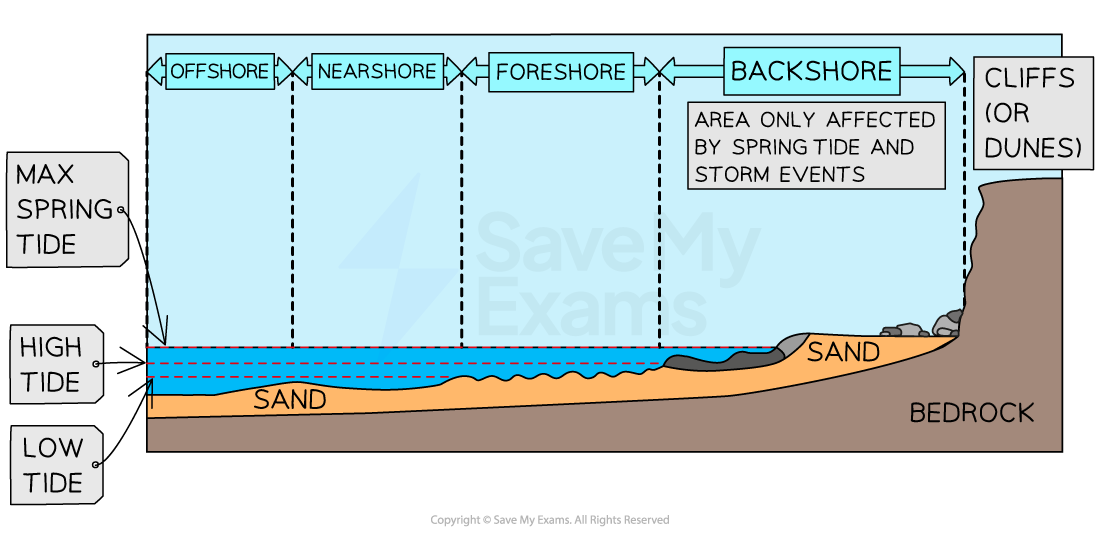Littoral Zone
The coast as a system
- As with any geographical system, the coast, as a system, has inputs, stores, transfers and outputs
- The system constantly strives to be in a state of dynamic equilibrium
- The coast can be viewed as both an open system and a closed system
- It is an open system because it receives inputs from the lithosphere, atmosphere, hydrosphere, biosphere and cryosphere
- However, during research and coastline management the coast can be seen as a closed system where a specific sediment cell is examined

The coast as a system
- There are examples of positive feedback at the coast
- As waves erode the cliff, material is released
- This material abrades the cliff which results in even more cliff erosion
- There are also examples of negative feedback at the coast
- As the shore is eroded, the material makes the wave-cut platform wider
- This can absorb wave energy and reduce the impact at the base of the cliff
The littoral zone
- The littoral zone is the area of the coast that can be affected by wave action
- It is a dynamic zone which means that it is constantly changing due to the interaction between processes on land and in the sea
- These changes can be:
- Long-term due to climate or sea level change
- Short term due to the tides, waves, and storms
- It is divided into four zones:
- Backshore is usually beyond the influence of wave action but can be affected during storm events
- Foreshore is the intertidal area between high and low tide
- Nearshore is the breaker zone where friction between the seabed and the waves causes them to break
- Offshore is the area outside the influence of waves

The littoral zone

